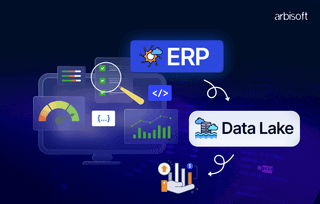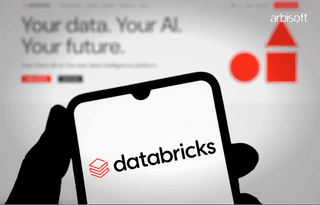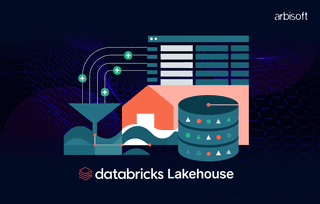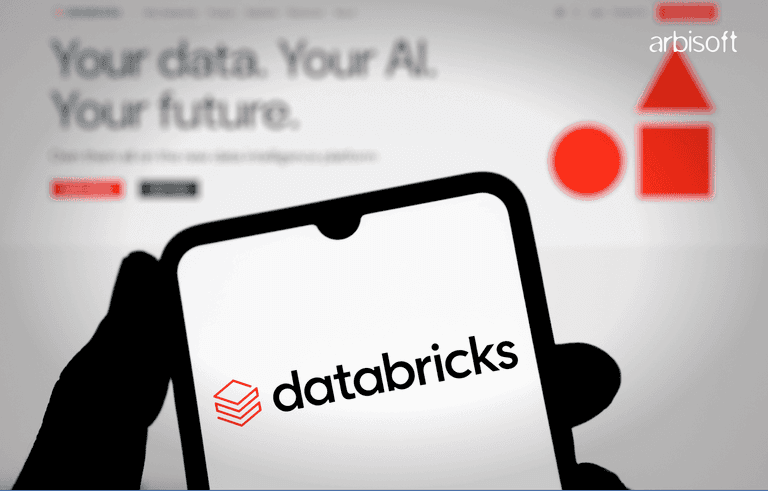We put excellence, value and quality above all - and it shows




A Technology Partnership That Goes Beyond Code

“Arbisoft has been my most trusted technology partner for now over 15 years. Arbisoft has very unique methods of recruiting and training, and the results demonstrate that. They have great teams, great positive attitudes and great communication.”
How to Choose the Right Tech Stack for Your Custom Software Project

Consider if a startup spends $500k building a smooth app… only to watch it crash under 10,000 users. Why? They chose a trendy-but-flimsy tech stack. Meanwhile, their competitor scales to 1 million users seamlessly.
The difference? Smart tech stack choices.
Here’s the cold, hard truth -
70% of software projects fail because teams pick tools based on hype, not logic. - Gartner, 2023
And in 2025, with AI rewriting the rules and 6G knocking on the door - the stakes are even higher.
Forget “just make it work.” Your tech stack needs to:
- Survive AI’s quantum leap (think ChatGPT-5 writing 40% of your code).
- Work with edge computing (the real-time data processing is in milliseconds).
- Bend, not break, when user demand explodes overnight.
Oh, and do it all while saving money and staying secure!
64% of developers believe the tech stack is critical to a project’s success. This means that the tools you choose today can empower your project to handle tomorrow’s challenges.
Understand Your Project Requirements
Choosing the right tech stack acts as the DNA of your custom software project. Here's how to navigate this phase:
Define Scope & Goals
Are you building:
- A real-time fintech app?
- An AI-driven SaaS platform (like ChatGPT for HR)?
- Or an IoT solution (smart fridges that order groceries before you run out)?
So, according to the numbers, 65% of enterprises say scalability is their #1 priority for cloud apps (IDC, 2024). That means, if your app can’t handle 10x traffic overnight, you’re building it wrong.
User Needs
- Mobile-first? Cool, but 2025’s users want apps that work offline and sync in 0.5 seconds.
- High concurrency? TikTok hit 1 billion users because it handled 10 M+ requests per second. Can your stack do that?
- Low latency? Gamers will rage-quit if your app lags by 2ms.
Regulatory Compliance
You don't want to skip this one at all.
- GDPR/HIPAA - This may sound boring with a lot of paperwork, but 45% of companies faced fines in 2023 for non-compliance (PwC).
- Quantum-resistant encryption - Banks will require this to stop hackers with quantum computers.
So if you’re building healthcare tech, tools like AWS GovCloud (HIPAA-ready) are your best choices. For fintech, you want to look at NIST’s post-quantum crypto standards.
Is your tech stack ready for the challenges of tomorrow?
Download this Future-Proof Tech Stack Blueprint (2025–2030) to select the right tech stack that scales.

Stay Ahead of the Tech Curve and Download this Future-Proof Tech Stack Blueprint (2025–2030)

Evaluate the Trends
Are you still rolling your eyes at terms like ‘AI-driven’ and ‘quantum-ready’? In 2025, your competitors won’t just be using these trends—they’ll be crushing your market share with them. Let’s unpack the real tech superpowers you can’t afford to ignore!
1. AI-Augmented Development
The coding is 35% faster because GitHub Copilot X writes half your boilerplate. In 2024, 48% of devs already use it (GitHub). AI tools like GPT and DeepSeek are already auto-fixing bugs, drafting docs, and even negotiating cloud costs.
This can free up your team to solve actual problems.
2. Cloud-Native Dominance
In 2025, 80% of enterprises will ditch servers for serverless (AWS). Why?
- Zero server drama - Just code + deploy.
- Pay-per-use - Like Netflix and AWS, but for the cloud.
Startups using serverless scale 2x faster. - Datadog, 2024
3. Low-Code/No-Code
If we look at the stats,
The low-code market will hit $32B in 2025. - Forrester
Drag-and-drop your way to an MVP in days, not months. The citizen developers (yes, your marketing team) can build internal tools. It is great for prototypes, but don’t use it for Mission: Impossible apps.
4. Edge Computing + 6G
Forget the cloud—edge computing brings data processing to your phone. By 2025:
The edge market hits $250B. - Grand View Research
6G networks will make lag feel like dial-up. Self-driving cars need an edge to make split-second decisions.
5. Quantum-Ready Security
Quantum computers will crack today’s encryption by 2030. 2025’s fix?
- Banks and militaries are already adopting post-quantum cryptography.
- Tools like NIST’s quantum-resistant algorithms are your shield.
60% of banks will upgrade to quantum-safe systems in 2025. - McKinsey
Match Tech Stack to Project Type
Your project’s success hinges on one question: Does your tech stack speak your industry’s language? Let’s cut through the noise with data-backed, future-proof tools.
Industry | Technology/Trend | Insight/Statistic |
Fintech | Blockchain (Hyperledger) | 25% of fintechs adopted blockchain technology for secure transactions in 2023. - SEO Sandwitch |
| Rust Programming Language | Renowned for its memory safety features, Rust is increasingly utilized in fintech applications where security is paramount. | |
| React Native | Facilitates cross-platform development, enhancing efficiency in fintech app deployment. | |
| AI Integration | 60% of fintech companies use AI for fraud detection. - SEO Sandwitch | |
| Quantum-Resistant Encryption | With advancements in quantum computing, adopting quantum-resistant encryption is becoming essential for securing financial transactions. | |
Healthcare | Python (AI/ML) | Widely used in developing diagnostic tools and predictive models, enhancing patient care. |
| FHIR APIs | Facilitate seamless patient data exchange, promoting interoperability among healthcare systems. | |
| HIPAA-Compliant Cloud Solutions | 70% of healthcare providers already use cloud infrastructure, with 20% planning adoption, ensuring data security and compliance. - CodeIT | |
| Medical Data Interoperability | The market is growing steadily at a CAGR of 12.9%, aiming to enhance seamless data exchange between healthcare systems. - CodeIT | |
| AI in Healthcare Operations | Innovations like AI-driven appointment scheduling and diagnostic tools are improving efficiency and patient outcomes.- thetimes.co.uk | |
E-commerce | MACH Architecture | Brands adopting microservices, API-first, cloud-native, and headless architectures experience faster feature rollouts and enhanced scalability. |
| Headless CMS | Enables real-time personalization of user experiences, crucial for dynamic pricing and targeted marketing during events like flash sales. | |
| AI-Powered Recommendations | Enhances customer engagement and sales by providing personalized shopping experiences. | |
| Progressive Web Apps (PWAs) | Offer app-like experiences on the web, improving performance and user engagement without requiring app store downloads. |
2025’s Must-Have Tools
| Category | Tool | Why It’s Hot in 2025 |
| Backend | Deno | 2x faster than Node.js + built-in security. |
| Frontend | SvelteKit | 30% smaller bundles = blazing-fast load times. |
| Database | PlanetScale | Scale MySQL to 1 M+ queries without breaking. |
| Game Changer | WebAssembly | Run AAA-game-grade apps in browsers. |
Team Skills + Tools
You can have the perfect tech stack, but if your team hates it (or can’t use it), you’re building a sinking ship. Let’s fix that.
1. Developer Availability
JavaScript + Python are dominant. According to the numbers, 70% of devs use it. Rust is really popular this year with 18%+ adoption, along with Go (+25%) - these both are rising fast!
2. Community & Documentation
Frameworks with poor support (e.g., AngularJS) increase maintenance costs by 40%. Tools like React, Django, and Next.js have giant communities. They can also create ChatGPT-optimized docs.
3. DevOps & Tools
AI-powered CI/CD (like GitLab’s Auto DevOps) cuts deployment time by 50%. The must-haves in this category are AI incident responders that fix outages before you notice. Following this will be Infra-as-Code tools that combine Terraform + ChatGPT to deliver the best results.
Steps to Nail Your Tech Stack
Selecting the right tech stack is a pivotal decision that can make or break your project's success. Here's a dynamic, step-by-step roadmap to evaluating and implementing a tech stack that aligns with current market trends and practices.
1. Evaluation
Always validate your ideas first.
- Feasibility - Check the practicality of your project. Does the technology exist to support your vision? Are there potential roadblocks?
- Proof-of-Concept (PoC) - Develop a minimal version of your product to test core functionalities. This helps in identifying technical challenges early on and ensures you're not investing resources into a black hole.
Now remember, the 'M' in MVP stands for Minimum, not Massive. Focus on shipping quickly and factor your development speed into your tech stack decision.
2. Development Environment Setup
With a validated concept, it's time to set up your development environment.
- Select Tools and Libraries - Choose technologies that not only meet your current needs but are also scalable for future demands. For instance, adopting an API-first mindset ensures flexibility and seamless integration as your project grows.
- Testing Frameworks - Implement smart testing tools to catch issues early. This approach saves time and resources down the line.
3. Iterative Testing and Feedback
With the current market dynamics, adaptability is key. Set up automated systems that check your code and push updates smoothly with Continuous Integration/Continuous Deployment (CI/CD). This helps you:
- Catch mistakes early
- Ship improvements faster
4. Maintenance and Future Upgrades
A successful project doesn't end at launch. Ongoing maintenance is very important.
- Documentation - Maintain records of your codebase, decisions, and processes. This makes onboarding easier and helps in troubleshooting.
- Training - Invest in continuous learning for your team to keep them on top of evolving technologies and methodologies.
- Future-Proofing - Stay informed about emerging trends. For instance, integrating AI into your tech stack.
Parting Thoughts
The difference between industry leaders and laggards won’t be ideas—it’ll be execution. Companies using data-driven tech stacks see 50% higher ROI (Accenture, 2024), while those clinging to outdated tools bleed time, money, and talent.
The fix? Partner with architects who specialize in AI-augmented dev, quantum-safe systems, and 6G-ready infrastructure. Don’t just adapt to the new tech world and changes—dominate it. Start today, or spend tomorrow playing catch-up.
























